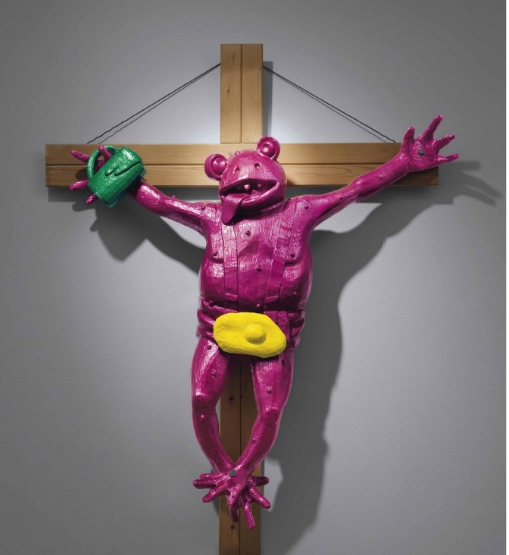As I poke around unhappily at my roast carrot and cumin soup in the somewhat soulless atmosphere of the National Portrait Gallery café, my copy of the freesheet,The Metro, falls open at Annie Leibovitz’s marvellous Velazquez-like portrait of Her Majesty and assorted grand and great-grand children. The person who handled the paper before I picked it up on the Bakerloo Line from Elephant & Castle seems to have smeared mayonnaise on part of the page, but this does not stop me noticing that the muted greens and browns and spatial composition unmistakably harks back to Las Meninas. Leibovitz was probably also aided in this compositional echo by the Royals’ odd desire to dress their offspring in children’s clothes that seem to have been ransacked from Room 40 of the V&A.
The casual brilliance of Leibovitz confirmed a pattern I have recently noticed of strong, confident works made by women artists that wittily play with art history and the genre of portraiture. I have to admit that this trend is somewhat depressing for a critic like myself who firmly believes that the answer to Linda Nochlin’s essay ‘Why Have There Been No Great Women Artists?’ involves the punchline ‘And then I glazed her hot buns when they came out of the oven!’
Over at the Whitechapel Gallery’s exhibition Electronic Superhighway, Celia Hempton’s paintings of chaps ‘shaking hands with Dr Winky’ in Internet chatrooms with their cropped detail and shallow picture space would remind the knowledgeable viewer of Mary Cassatt, with the poor chaps reduced to the margins of vision. Meanwhile Amalia Ulman’s series Excellences and Perfections more than nods to Cindy Sherman’s Untitled Film Stills series. Still if any of the students and hipsters who make up the main audience of the Whitechapel’s exhibition have noticed the link to Cassatt, I’ll personally get out ‘the Old Boy’ on Snapchat.
Perhaps us chaps have just been boxed out of certain genres and portraiture is no longer an option unless one is happy with inevitable failure. This isn’t necessarily a bleak scenario as failure can be very attractive, as cunning Loic Gouzer over at Christie’s knows, having gathered together a selection of high-profile works around such a theme for his forthcoming sale Bound to Fail. Unsurprisingly the auction features the high priest of this sort of thing, Martin Kippenberger whose self-portraits along with Mapplethorpe came from a time when real men made self-portraits featuring huge pairs of white underpants (or not, in Mapplethorpe’s case). Kippy has one of his crucified frogs in the sale, a motif that I’ve always thought made reference to the words of the great French biologist and philosopher Jean Rostand, ‘Le biologiste passe, la grenouille reste.’ At any rate it is a work that was provocative enough for an Italian politician from South Tyrol to go on hunger strike a few years ago. And looking at the now tepid soup, I think I might re-start the protest.
Online exclusive published 27 April 2016
